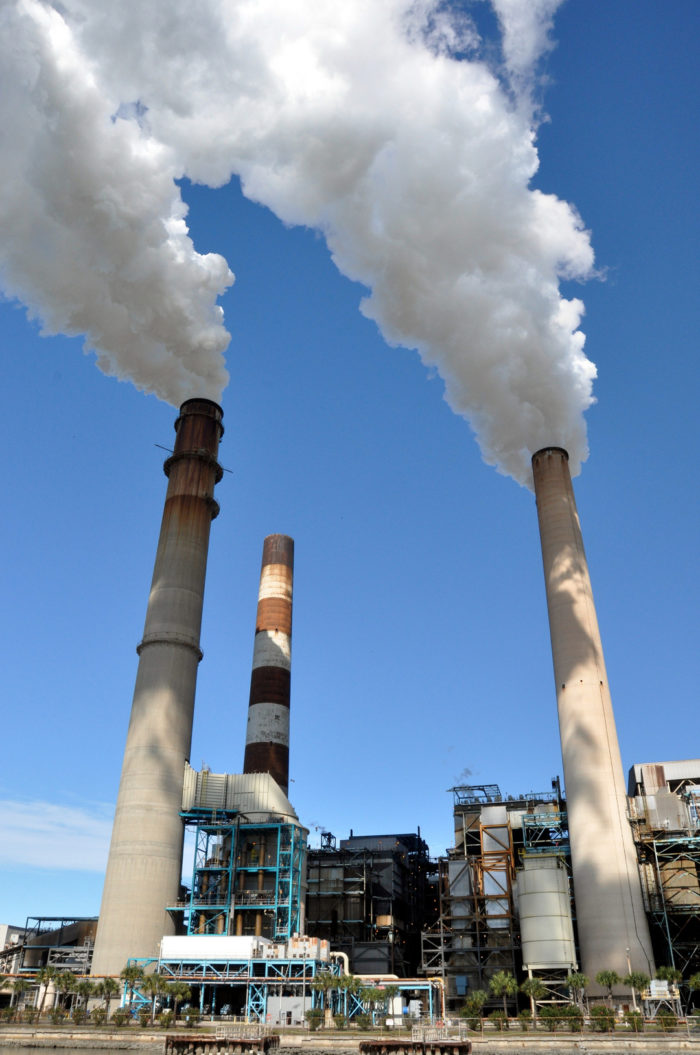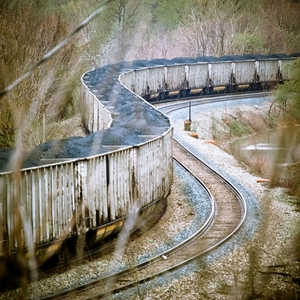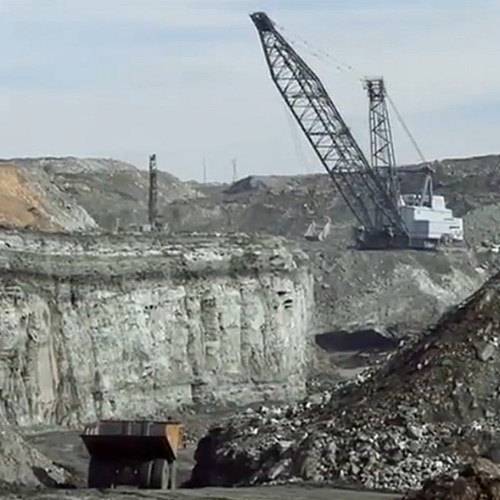
Image Credit: Walter/CC by 2.0/Flickr
The largest bank in the U.S., JP Morgan Chase, says that it will stop financing new coal-fired power generating plants in this country, putting more pressure on the industry and pointing to what one analyst calls a “downward shift that is permanent.”
The New York Times reports that JP Morgan’s announcement follows similar statements from the Bank of America, Citigroup, and Morgan Stanley that they also are backing away from coal.
Chiza Vitta, a metals and mining analyst with the credit rating firm Standard & Poor, told the newspaper: “There are always going to be periods of boom and bust, but what is happening in coal is a downward shift that is permanent.”
Coal remains an important source of energy, especially outside the U.S., so JPMorgan’s decision on coal-fired power plants here won’t stop the bank from lending for plans in the developing world. But in the U.S., tougher environmental regulations aimed at limiting carbon emissions, along with cheaper natural gas and other the rise of other energy sources, are making coal look like an increasingly bad bet for financiers.
Three of the country’s big coal companies have filed for bankruptcy protection, and last week Peabody Energy, the world’s largest private-sector coal company, said that it also might have to do the same, The Times reported. Peabody had been trying to sell mines in Colorado and New Mexico, but the deals apparently have foundered over the buyer’s difficulties in lining up financing.
Move away from coal is a ‘structural shift’
According to the Carbon Tracker Initiative (CTI), which describes itself as a nonprofit think tank, the decline of coal is part of a fundamental shift in U.S. power generation.
In a report published last year, the organization said that power generation remained the same between 2005 and 2013 even as the mix of energy sources underwent significant change. Over that eight-year span, the amount of energy from gas-power plants rose 8.7% and renewables were up 4.1%. Energy from coal-fired sources, however, dropped 10.5% and electricity derived from oil was down 2.3%. Even in China, coal showed a 2.9% drop in consumption in 2014.
“The Dow Jones Total Market Coal Sector Index is down 76% over the last five years, compared to the Dow Jones Industrial Average that is up 69% over the same period,” the report said.
At the time the report was written, more than two dozen coal companies had gone into bankruptcy.
One problem in the coal industry, CTI said, was that company executives were unrealistically betting on an upswing in prices and demand that never happened.
The report noted: “The largest coal producer in the U.S., Peabody Energy, appears to treat the signals that have led to such huge financial pain as an aberration, rather than the new normal. In their quarterly report for 2014, Peabody reveals their expectation that in the U.S., ‘utility coal usage is projected to increase 10 to 30 million tons over 2014 levels.’ Furthermore, Peabody expects ‘global coal demand to rise 500 million tonnes by 2017… [with] an estimated 8 to 10% increase in seaborne thermal coal demand.’ There are few signs that suggest that either forecast will come close to fruition.”
The prediction seems to have been borne out with an announcement last week from Peabody that its ability to operate as a “going concern” was in doubt, Bloomberg reported.
Peabody shares have lost 97% of their value in the last year.
Coal is still an important source of power
Despite growing troubles in the industry, coal still generates more power than any other single energy source in the U.S., according to the U.S. Energy Information Agency, amounting to 39% of the U.S. electricity supply in 2014. Natural gas was a relatively distant second at 27%. (Wind and solar together were less than 5%.)
U.S. financial institutions may be backing away from King Coal, but the move won’t happen overnight. An abrupt retreat would not only threaten the financing that coal companies need to keep their thousands of workers employed, but it could also threaten the industry’s ability to pay for mine reclamation in the future, The Times said.
That helps explain why financial institutions are backing away gradually. Deutsche Bank, for example, is signaling an end to financial support for mining that involves the removal of mountaintops, but isn’t giving up on the industry altogether.
Dialing back financial support also can be difficult for U.S. bankers who have been serving the coal industry for years.
“It put them in a difficult position to say to the companies they have worked with for years, ‘We are pulling back,’ ” Bank of America’s James Mahoney told The Times. “It runs counter to everything we do as a client-focused company.”
Weekly Newsletter
Get building science and energy efficiency advice, plus special offers, in your inbox.















4 Comments
Projections of coal vs. natural gas for 2016
Far from being a distant second (as it might have seemed in 2014) natural gas is expected to overtake coal for electrical production in the US in 2016:
http://www.eia.gov/todayinenergy/detail.cfm?id=25392
For new generation coming online, renewables capacity is again expected to exceed new natural gas capacity in 2016, which was the case in 2015:
http://www.utilitydive.com/news/solar-and-wind-comprise-61-of-2015-capacity-additions-gas-contributes-35/411813/
Peabody had made several bets on metalurgical coal in anticipation of continued rapid expansion in the Chinese steel markets, but those bets have not paid off, or at least not in time to counter the precipitous drop in thermal coal. They're in a heap of trouble, and have been pulling some questionable moves offloading their debt to companies they buy for the (apparent) purpose of running the subsidiary companies into bankrupcy burdened with Peabody's pension debt obligations, all the while shelling out ~$25M /annum to the five most highly compensated execs even as the stock price tanked:
http://www.vox.com/2016/3/18/11259906/peabody-energy
Coal plants can be converted
Coal plants can be converted to natural gas and vice versa. Would the creditors not fund a new natural gas plant? Natural gas prices tend to be very volatile and utilities convert to natural gas when prices stay lower than coal for a time. When everybody is converted, natural gas prices spike and its back to coal.
Coal-to-gas, sometimes yes, often not, but never the converse.
Conversion to gas isn't a given, though often possible. A key aspect to the economics of it is proximity to adequate pipelined fuel supply (and often storage.) But it's not cheap even when it can pencil out favorably in the short term.
Going back to coal after a gas conversion simply isn't going to happen, no matter where natural gas prices go. New wind and new solar are already cheaper than new coal (and increasingly, cheaper than new gas.) New generation capacity in the US was dominated by renewables for the first time in 2015, and is projected to gain further share in 2016. With renewables the risk is low, since it isn't subjected to fuel price volatility. Take a look at Lazard's levelized cost analysis for 2015. (Page 2 is a pretty good visual summary).
https://www.lazard.com/media/2390/lazards-levelized-cost-of-energy-analysis-90.pdf
With combined cycle gas and supercritical thermal coal there are slow incremental improvements in efficiency, but not much in the way of cost. With both wind and solar there are ongoing and significant financial "learning curves", where the costs are falling in proportion to production volumes, and there are still fairly rapid incremental improvements in efficiency/capacity as well. Since there's rough levelized cost parity now, in five years it's a slam dunk- advantage renewables. Until the grid controls get smarter combined cycle gas will still be useful to the grid for some fraction of the supply, but there's no reason to build more than is needed to balance intermittent renewables. Thermal coal (even combined cycle supercritical coal) doesn't ramp fast enough to provide that function efficiently. Even if it can do the job if pushed, the efficiency hit is high enough that it's unlikely to be competitive enough against combined cycle gas, even in a high gas price scenario.
The financial sector (Citi Group, JP Morgan, Lazard et al) understands this, which makes financing new coal plants almost as difficult as financing a new nuclear plant.
Metalurgical coal will continue to be mined for decades or even centuries, but the prospects for thermal coal are one-way, into the abyss.
Why are many states investing in renewable energy and divesting their futures from coal and natural gas? Because it is good for the environment and because there is growth possible in those industries.
This bodes well for the future and future generations.
We will always need fossil fuels because they are always available for energy but we need to increase our energy independence in the light of increasingly severe natural disasters, sea level rise and the environmental consequences of producing coal and natural gas.
This
Log in or create an account to post a comment.
Sign up Log in